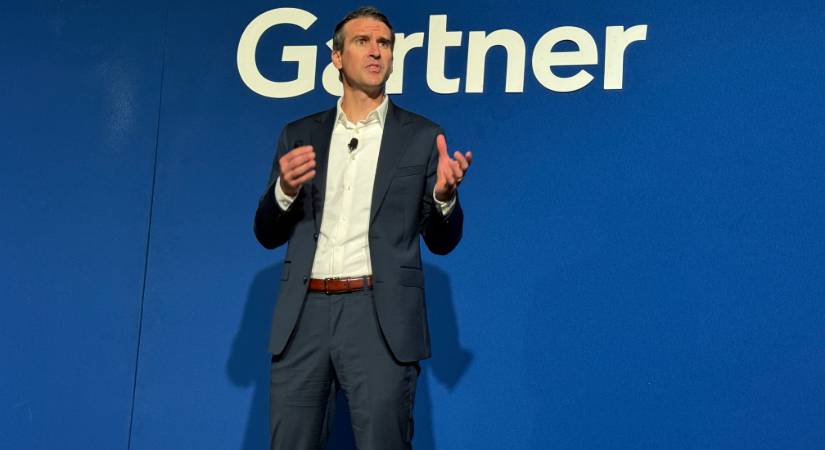Gartner Identifies the Top Strategic Trends in Software Engineering for 2025 and Beyond
- Inno-Thought Team

- Jul 3
- 4 min read
Software Engineering Leaders Must Capitalize on These Trends to Accelerate Innovation with AI and Implement Future-Ready Engineering Practices

Gartner, Inc. announced the top strategic trends in software engineering for 2025 and beyond. These trends enable organizations to accelerate innovation through AI-driven automation and adopt efficient, future-ready engineering practices.
“AI-enabled tools and technologies are fundamentally changing how software is built and delivered,” said Joachim Herschmann, VP Analyst at Gartner. “Gartner’s top trends offer leaders a roadmap to harness AI-driven automation, optimize talent strategies and adopt sustainable, AI-native engineering practices. Software engineering leaders who act on these trends now will position their organizations for long-term success.”
As organizations develop their strategic roadmap for 2025 and beyond, they must prioritize investments that align with these six strategic trends in software engineering:
AI-Native Software Engineering
AI-native software engineering is transforming the software development life cycle (SDLC) by embedding AI into every phase, from design to deployment. These practices enable AI to autonomously or semi-autonomously handle a significant share of tasks across SDLC.
Gartner predicts that by 2028, 90% of enterprise software engineers will use AI code assistants, up from less than 14% in early 2024. The role of developers will shift from implementation to orchestration, focusing on problem solving and system design, and ensuring AI tools deliver high-quality outcomes. To succeed, teams must balance automation with human oversight, considering business criticality, risk and workflow complexity.
Building LLM-Based Applications and Agents
Large language models (LLMs) are transforming software engineering by enabling applications to interact intelligently and autonomously, similar to human interactions. Gartner predicts that by 2027, at least 55% of software engineering teams will be actively building LLM-based features.
“Successfully building LLM-based applications and agents requires software engineering leaders to rethink their strategies,” said Herschmann. “This means investing in upskilling, experimenting with generative AI (GenAI) outputs and implementing strong guardrails to manage risks.”
GenAI Platform Engineering
GenAI platform engineering leverages established platform engineering approaches to help developers easily discover, integrate and securely use GenAI capabilities within their applications. Gartner predicts that by 2027, 70% of organizations with platform teams will include GenAI capabilities in their internal developer platforms.
By making AI capabilities easily discoverable through self-service developer portals, prioritizing features based on developer needs and embedding robust governance and security practices, leaders can ensure their teams build innovative applications that comply with organizational standards.
Maximizing Talent Density
Talent density—the concentration of highly skilled professionals within teams—has become a key differentiator for high-performing engineering organizations. When supported by the right culture and technology strategies, talent-dense teams can operate with greater efficiency and adaptability, delivering increased customer value.
“To remain competitive, organizations must move beyond traditional hiring practices and focus on building teams with high talent density,” said Herschmann. “Leaders should cultivate a culture of continuous learning and collaboration to attract and retain skilled professionals who can adapt and grow with evolving business needs.”
Growth of Open GenAI Models and Ecosystem
Open GenAI models are reshaping the enterprise AI landscape by offering greater flexibility, lower costs and freedom from vendor lock-in.
Unlike proprietary models, open GenAI models enable organizations to customize, fine-tune and deploy AI solutions tailored to their specific needs, whether on-premises or on-cloud. This shift is making advanced AI capabilities more accessible and cost-effective for a wider range of teams and use cases.
Gartner predicts that by 2028, 30% of total global enterprise spend on GenAI technologies will be on open GenAI models tuned for domain-specific use cases.
Green Software Engineering
Green software engineering is the discipline of building sustainable software that is carbon-efficient and carbon-aware. This approach shifts the mindset from treating the environmental impact of software as an afterthought to incorporating green practices from the start, in every stage from planning to production.
“As organizations build and buy more software as part of digital initiatives, the increase in carbon footprint from compute-intensive workloads can be at odds with their sustainability targets,” said Herschmann. “Building intelligent applications with GenAI is energy intensive, making green software engineering practices essential.”
Featured Whitepaper

[Whitepaper] Software Supply Chain State of the Union 2025Expanding threat landscape jeopardizes software integrity
We combined responses from 1,400 Security and DevOps professionals, analysis from the JFrog Security Research team, and JFrog Platform data to understand the state of software supply chains today.
What’s happening in the market
Open-source risk is exploding with MILLIONS of new packages
CVE data issues obfuscate vulnerability severity and applicability
Organizations continue to increase the number of security tools used
Complete visibility of software provenance eludes many organizations
The AI software supply chain is booming, but so is the risk
Key takeaways you will get from this report:
What’s in Your Software Supply Chain?
Number of programming languages used in development organizations
New packages per year per package type
Top package technologies in use by organizations
Pace at which new OSS packages are being injected into an organization
The Accelerating Risk in Your Software Supply Chain
Vulnerabilities found in a given technology or package type
Most common types of vulnerabilities
Common vulnerability impacts for high profile CVEs 2024
Severity of the vulnerabilities being introduced into your software supply chain
Other sources of risk hiding in your code
How Organizations are Applying Security Efforts Today
Sourcing restrictions
Scanning, scanning, scanning
Establishing visibility and control across application pipelines
How much time security efforts are costing your organization
The Next Frontier of Risk: AI and Machine Learning Development
Trends in AI adoption and DevSecOps
Usage, governance, and scanning of ML model artifacts













































Comments